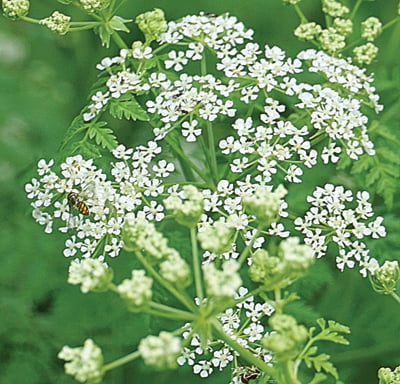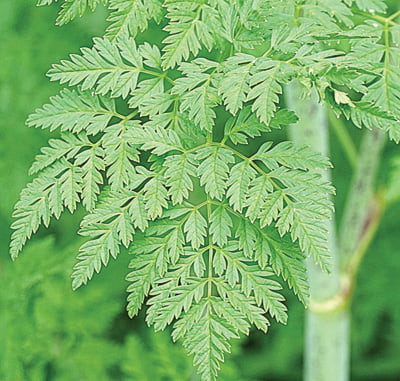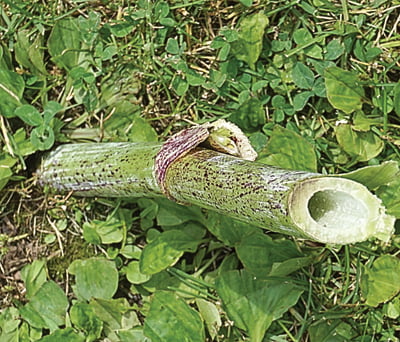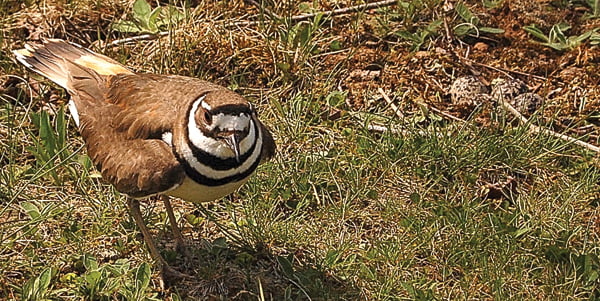


Ken Springer
Watoga Park Foundation
A Very Wicked Plant
Many of you living here in southern West Virginia have probably noticed the proliferation of plants along the margins of our roads and the corridor of our beautiful Greenbrier River Valley that you cannot readily identify. Most of these newer arrivals have started to spread out and are becoming more apparent.
Over the years, our area has suffered numerous infestations from invasive species such as the woolly adelgid that has decimated the hemlock* trees. Along our roadsides and the Greenbrier River Trail, the native wildflowers such as trilliums, bluebells and bloodroot are rapidly being replaced by garlic mustard, another prolific invasive plant.
If you have driven down Rt. 219 lately, you may have noticed a tall plant with umbrella-shaped clusters of small yellow flowers. This is wild parsnip and it represents ‘but one of a larger group of similar plants called “umbellifers” – so called because the flowers bloom from umbels.
Foragers prize the root of the wild parsnip for its texture and taste, much like that of the domestic parsnip.
But caution must be exercised when handling and eating any of the plants in the carrot family, many of which are toxic to one degree or the other. Wild parsnips and its cousins, giant hogweed and cow parsnip, are phototoxic and release a compound that can cause your skin to become reactive to sunlight, resulting in blistering.
Some of the plants in this family are toxic when ingested, so positive identification is an absolute necessity.
But there is one member of this group that has spread its seed throughout our area and must be avoided altogether for it is one of the most lethal plants in the world – poison hemlock.
You have no doubt heard of Socrates, a teacher and philosopher in 5th century BC Athens. Considered one of the primary founders of Western philosophy, he ran afoul of the Athenian government when his teachings were deemed to be “corrupting the youth of Athens.”
For this infraction, he was given a death sentence. He was afforded the opportunity to escape by friends, but for a number of reasons, including his dedication to principle, he chose to drink a concoction made from poison hemlock.
With his friend Crito by his side, Socrates drank a tea made of poison hemlock and peacefully died, his wits about him to the very end.
If a plant could be described as beautiful and wicked, then Hemlock, Conium maculatum, fits the bill on both counts. This tall, stately plant has fern-like leaves that can be mistaken for Queen Anne’s Lace when young, although unlike Queen Anne’s Lace it is hairless on both leaves and stalk.
The small white flowers bloom from the upper part of the plant in umbrella-shaped umbels. The stalk is magenta streaked; the purplish blotches are sometimes called Socrates’ tears. The stalk is hollow, which makes it attractive to children. This feature of poison hemlock has caused the death of a number of children when they made whistles out of the stalk, absorbing the toxin from contact with their lips.
Poison hemlock is extremely toxic to man, wildlife, domestic animals, dogs, cats and some birds – it spares few animals that make it their lunch. Indeed, all parts of the poison hemlock are poisonous; that includes the root, stalk, leaves, flowers and seeds.
The toxic alkaloids seem to be spread evenly throughout the plant except for the period just before the flowers bloom; at this point, the toxicity is higher in the leaf structure. If the plant is cut down, the toxicity will degrade but at a relatively slow rate, so just because the plant is brown and dead there still may be enough poison to cause death, particularly in the root and seeds.
Of the eight different alkaloids that make up the poison, two combine to play a major role in causing malfunction of the nervous system, Coniine and Gamma Coniceine. These two compounds are pivotal in causing paralysis of the muscles, resulting in respiratory failure and death. At this point, only artificial or mechanical ventilation may save the victim, or death will ensue. To date there is no antidote per se, so successful treatment depends entirely on supportive care.
Ingesting just a few grams of poison hemlock can be fatal. The symptomatology of poison hemlock starts with an increase in heart rate followed by a continued slowing of the rate.
From most accounts death by poison hemlock is relatively painless, although there can be some agitation and discomfort from some of the symptoms, such as excessive salivation. A general numbness extends throughout the body, and victims are often mentally astute right up to the point of death. Perhaps this accounts for the fact that the now-defunct Hemlock Society, a right-to-die organization, had the poison hemlock as its logo and the slogan, “Good Life, Good Death.”
Water hemlock plants are found in our area, but in much smaller numbers. Fatal ingestions of this plant also occur. Water hemlock is primarily a central nervous system stimulant. Therefore, the relatively rapid development of seizures/convulsions and rapid heart rate characterize a toxic ingestion.
You can help control this noxious and dangerous plant by knowing how to identify it and by educating your family and friends about it.
If you find it growing in parks, gardens, playgrounds and even around your home you can contact Greg Hamons, our County Extension Agent, for information about safe removal of poison hemlock. Greg can be reached at 304-799-4852 or by email at Greg.Hamons@mail.wvu.edu
A fatal case of hemlock poisoning recently occurred when a 12-year-old girl mistook poison hemlock for parsley. It was reported that the poisonous plant was growing on the margins of the home garden. It can happen!
* The hemlock tree (Tsuga Canadensis) should not be confused with the poison hemlock plant.
Eat healthy, volunteer in your community and –
Keep Hiking,
Ken Springer
A special thanks to Dr. Michael Jarosick and Greg Hamons.



